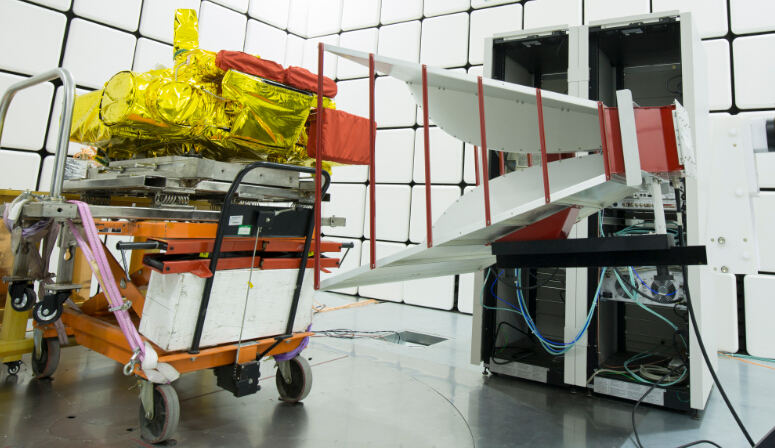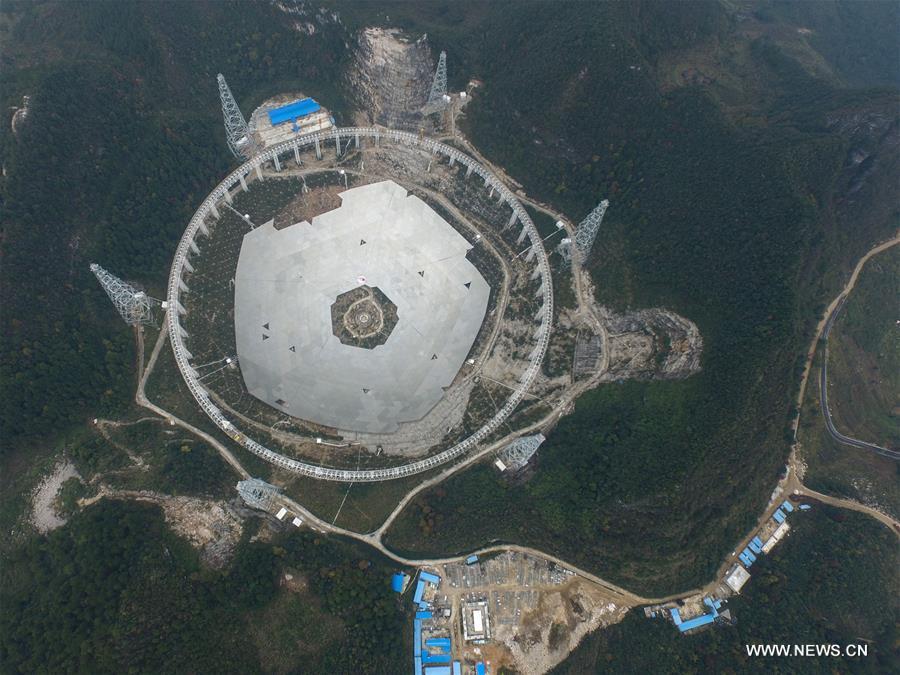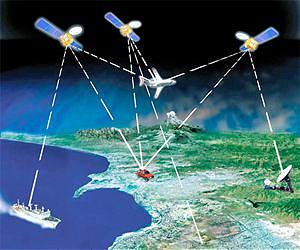JSCh
ELITE MEMBER

- Joined
- Jun 9, 2011
- Messages
- 13,235
- Reaction score
- 2
- Country
- Location
Satellite to help with emission reduction
By Zhao Lei (China Daily) Updated: 2015-12-05 08:04
China will launch a satellite in 2016 dedicated to monitoring the global distribution of atmospheric carbon dioxide, which will help reduce the country's greenhouse gas emissions.
The first of its kind in China, the satellite, tentatively called TanSat, is part of a Ministry of Science and Technology's global CO2 observation satellite program and will be assembled before May, according to a statement published by the Changchun Institute of Optics, Fine Mechanics and Physics under the Chinese Academy of Sciences.
After TanSat enters a Sun-synchronous orbit, it will detect and generate data on global CO2 emissions that will help China's energy-conservation and emission-reduction efforts and support the nation's stance in international CO2 emission talks, the statement said.
In his speech at the opening ceremony of the United Nations Conference on Climate Change in Paris, President Xi Jinping said China has pledged to peak CO2 emissions by around 2030 and reduce CO2 emissions per unit of GDP by 60 to 65 percent from 2005 levels over the same time.
In addition to environmental protection, data provided by the satellite can assist with research in fields ranging from oceanography to meteorology, according to the institute.
The institute has been developing the two major pieces of equipment that will be installed on the satellite - the CO2 detector and the atmospheric particulate matter sensor - the statement added.
It said that the CO2 detector will use optical remote sensing technology to examine the concentration of CO2 and other greenhouse gases in the air, while the atmospheric particulate matter sensor will analyze cloud and particulate matter to support the calculation of CO2 distribution.
Once the equipment is developed, it will be sent to the Shanghai Engineering Center for Microsatellites to be mounted on TanSat.
To test and improve the accuracy of the satellite's apparatus, ground observation stations will be set up in Beijing, Mohe in Heilongjiang province, Guangzhou in Guangdong province, Waliguan in Qinghai province as well as Urumqi and Tazhong in the Xinjiang Uygur autonomous region. They will sample local CO2 concentrations and compare the readings with data generated by TanSat, according to the National Meteorological Center.
Globally, the United States, Japan and the European Space Agency have launched their space-based greenhouse gas observation projects.
Li Jiahong, chief engineer at the National Remote Sensing Center under the Ministry of Science and Technology, previously said that China plans to use TanSat to work with other parties' satellites to form a constellation that can better detect greenhouse gases and handle climate change.
zhaolei@chinadaily.com.cn

Payloads (Image by ZHANG Nan, Xinhua)

Payloads (Image by ZHANG Nan, Xinhua)

Model of payloads (Image by CIOMP)

Experiment of payloads of Tansat (Image by CIOMP)
By Zhao Lei (China Daily) Updated: 2015-12-05 08:04
China will launch a satellite in 2016 dedicated to monitoring the global distribution of atmospheric carbon dioxide, which will help reduce the country's greenhouse gas emissions.
The first of its kind in China, the satellite, tentatively called TanSat, is part of a Ministry of Science and Technology's global CO2 observation satellite program and will be assembled before May, according to a statement published by the Changchun Institute of Optics, Fine Mechanics and Physics under the Chinese Academy of Sciences.
After TanSat enters a Sun-synchronous orbit, it will detect and generate data on global CO2 emissions that will help China's energy-conservation and emission-reduction efforts and support the nation's stance in international CO2 emission talks, the statement said.
In his speech at the opening ceremony of the United Nations Conference on Climate Change in Paris, President Xi Jinping said China has pledged to peak CO2 emissions by around 2030 and reduce CO2 emissions per unit of GDP by 60 to 65 percent from 2005 levels over the same time.
In addition to environmental protection, data provided by the satellite can assist with research in fields ranging from oceanography to meteorology, according to the institute.
The institute has been developing the two major pieces of equipment that will be installed on the satellite - the CO2 detector and the atmospheric particulate matter sensor - the statement added.
It said that the CO2 detector will use optical remote sensing technology to examine the concentration of CO2 and other greenhouse gases in the air, while the atmospheric particulate matter sensor will analyze cloud and particulate matter to support the calculation of CO2 distribution.
Once the equipment is developed, it will be sent to the Shanghai Engineering Center for Microsatellites to be mounted on TanSat.
To test and improve the accuracy of the satellite's apparatus, ground observation stations will be set up in Beijing, Mohe in Heilongjiang province, Guangzhou in Guangdong province, Waliguan in Qinghai province as well as Urumqi and Tazhong in the Xinjiang Uygur autonomous region. They will sample local CO2 concentrations and compare the readings with data generated by TanSat, according to the National Meteorological Center.
Globally, the United States, Japan and the European Space Agency have launched their space-based greenhouse gas observation projects.
Li Jiahong, chief engineer at the National Remote Sensing Center under the Ministry of Science and Technology, previously said that China plans to use TanSat to work with other parties' satellites to form a constellation that can better detect greenhouse gases and handle climate change.
zhaolei@chinadaily.com.cn

Payloads (Image by ZHANG Nan, Xinhua)

Payloads (Image by ZHANG Nan, Xinhua)

Model of payloads (Image by CIOMP)

Experiment of payloads of Tansat (Image by CIOMP)



































